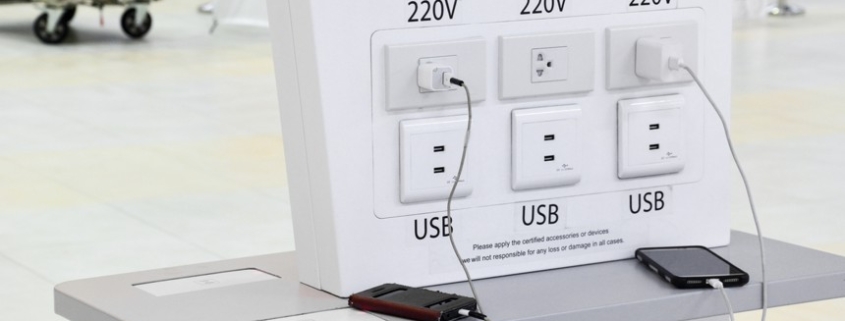An Emerging Threat: How to Protect Yourself from “Juice Jacking”
For so many, our smartphones, tablets, and other Internet of Things (IoT) devices have become an integral part of our daily routines. These handy gadgets keep us connected and productive. However, alongside these technological advancements, cybercriminals have also upped their game, continuously seeking new ways to exploit unsuspecting users.
One such threat which has recently emerged is known as “Juice Jacking.” It’s more common than you think and has only been around since the early 2010s. In this article, we will delve into the threat of Juice Jacking, understand its course of action, highlight the associated risks, and most importantly, equip you with practical tips to safeguard your devices.
What is Juice Jacking?
Juice Jacking is a term used to describe the malicious act of compromising public charging stations or USB ports to gain unauthorized access to your devices. The term was first coined by a group of researchers who created a fake kiosk and displayed it at a cybersecurity convention to bring awareness about this potential threat.
Today, these counterfeit charging stations are commonly found in bustling areas like airports, shopping malls, and other public spaces, masquerading as innocent power sources. They’re often positioned next to public charging stations/ports. Unsuspecting victims who are eager to recharge their devices unknowingly fall into the trap. When connecting their devices to these compromised charging stations, they expose their data to potential theft.
The Risks of Juice Jacking
We’ve all been in public before with our smartphones on 1% desperately searching for a place to get a quick charge. It may seem worth the risk to opt for a public charging station if that’s your only option. However, the repercussions of falling victim to Juice Jacking can be severe and far-reaching. Here are some of the risks associated with this nefarious practice:
- Data Theft: When connected to a compromised charging station, cybercriminals exploit vulnerabilities in your device’s software to gain unauthorized access. They can then extract your personal information, such as passwords, financial data, or sensitive documents. The aftermath of a data theft can be emotionally distressing and financially devastating.
- Malware Installation: In addition to stealing your data, malicious actors may also inject your device with malware during the Juice Jacking process. Installation of malware can render your device vulnerable to further attacks, compromise its performance, or even grant unauthorized access to your device by remote hackers. The worst part, you may not even know if someone has downloaded malware onto your device as it can secretly embeds itself stealing critical information undetected.
Tips for Preventing Juice Jacking
Fortunately, there are some preventative measures you can take to safeguard your devices when your battery is low in public:
- Carry a Personal Charging Port: Investing in a portable power bank or carrying your own charger gives you control over your device’s charging process. By relying on your own power source, you eliminate the need to use potentially compromised public charging stations.
- Opt for Wall Outlets: Whenever possible, choose wall outlets over public USB ports. Wall outlets are generally less susceptible to compromise and offer a more secure charging experience.
- Update Devices’ Software: Regularly updating your devices’ software is vital. Software updates often include security patches that address known vulnerabilities, making it harder for cybercriminals to exploit your device.
- Use VPN on Public Wi-Fi: If you need to connect to the internet while charging your device in public, use a reputable virtual private network (VPN) service. A VPN encrypts your internet traffic, enhancing your online privacy and security.
Always Keep Personal Security Top of Mind
Remember, safeguarding our personal information and digital devices is an ongoing process. By staying informed, implementing security best practices, and investing in robust home security measures, we can create a safer and more secure digital environment for ourselves and our loved ones. Let’s make security a top priority, both on the go and within the comfort of our homes. Learn more by contacting us today.
- National Safety Month: Why Now is the Time to Reassess Your Security - June 24, 2025
- Memorial Day Camping Safety Tips - May 20, 2025
- The Risks of Hiding Spare Keys & Smarter Alternatives - April 24, 2025



